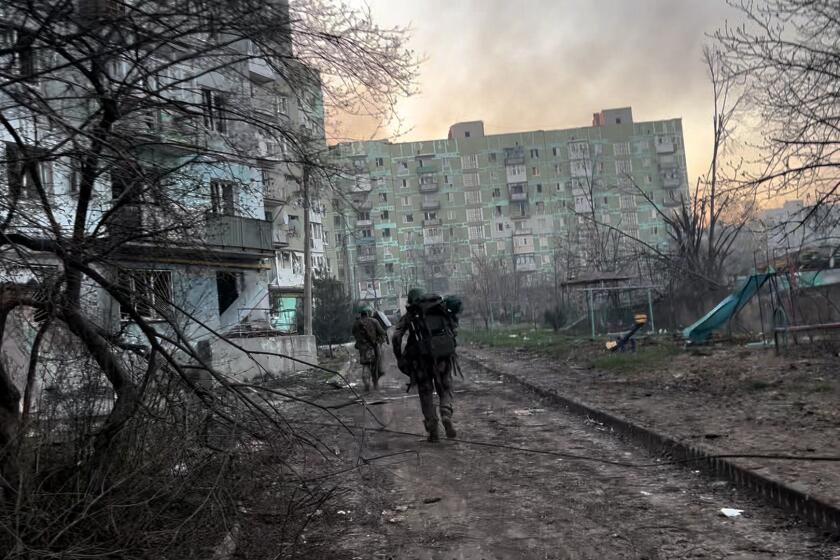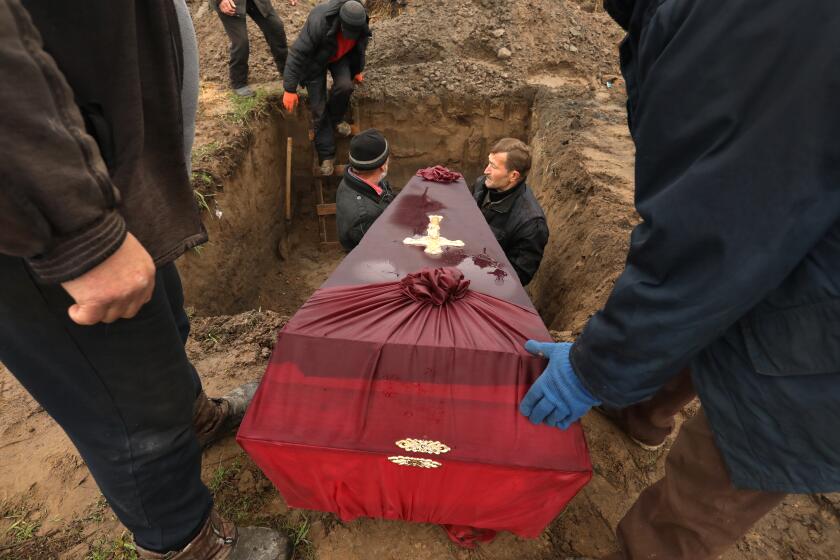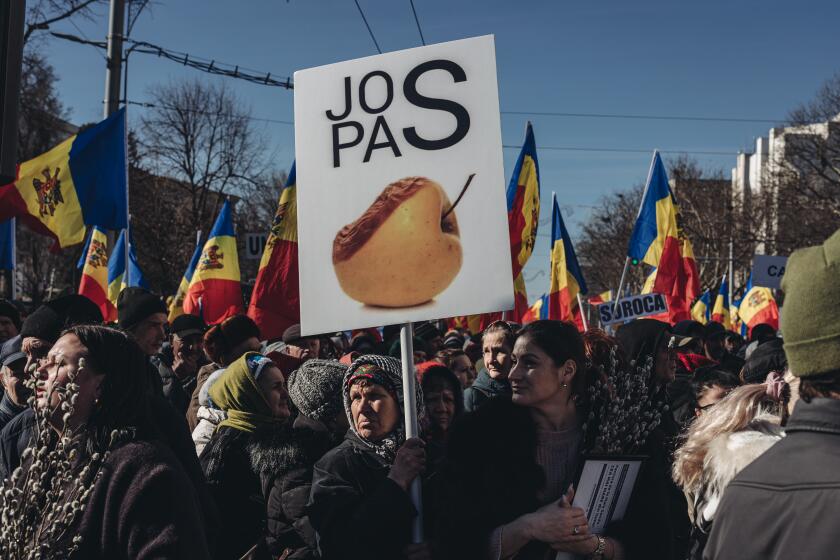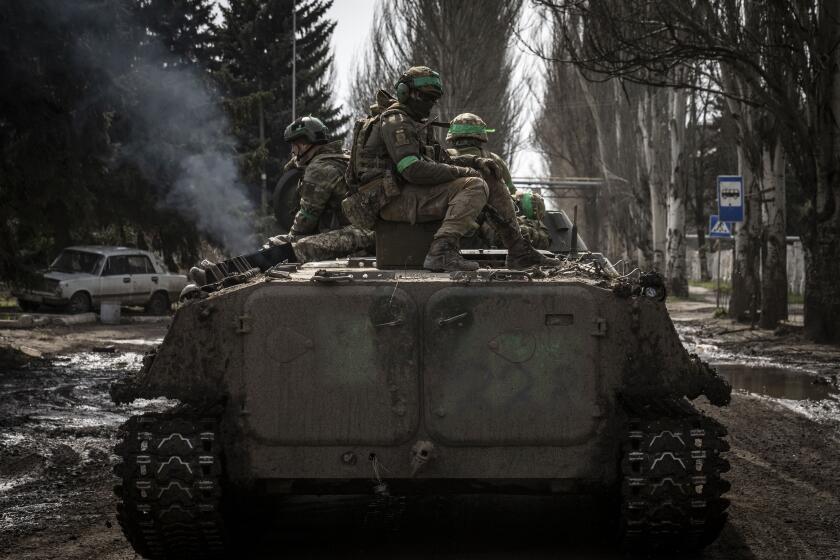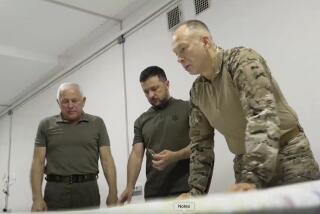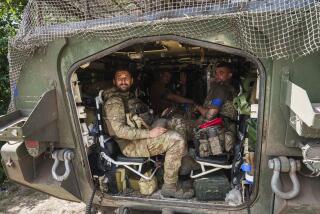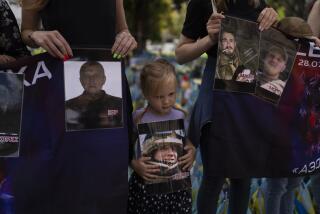Outrage in Ukraine grows over video seeming to show soldier’s beheading
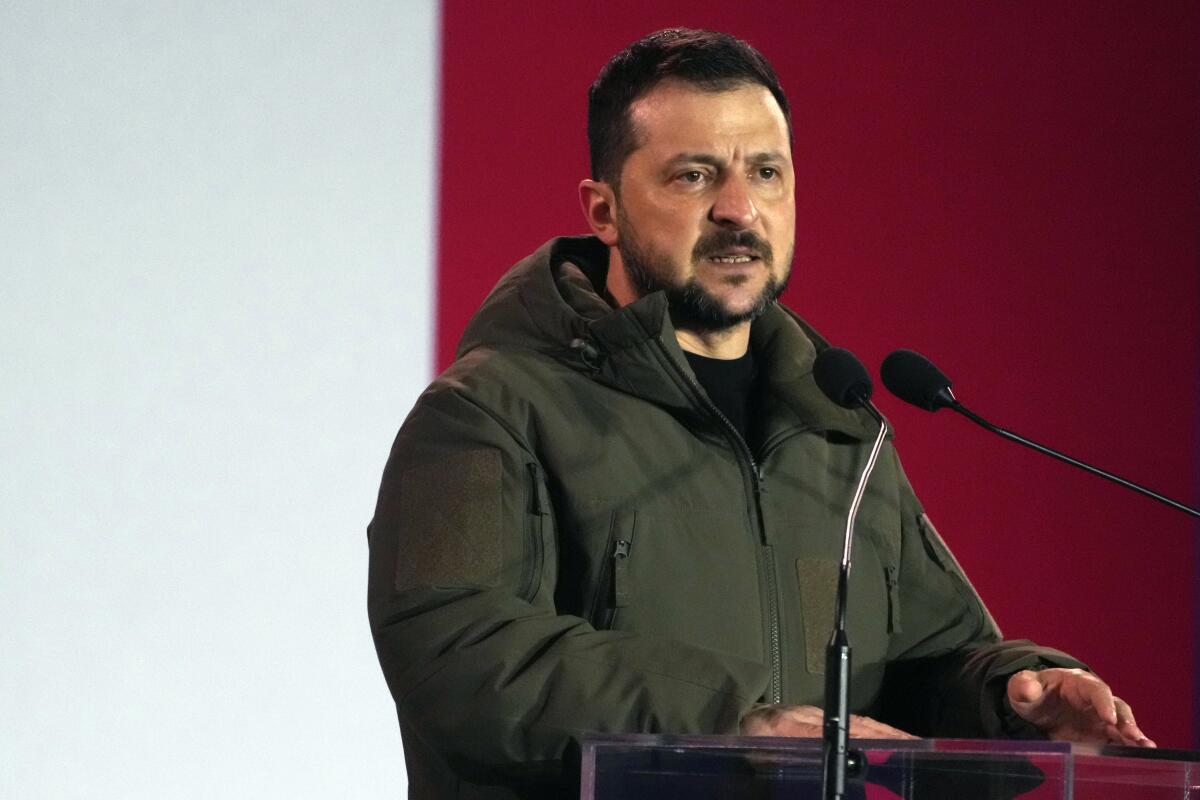
KYIV, Ukraine — Ukraine launched an investigation Wednesday into a gruesome video that purportedly shows the beheading of a Ukrainian soldier, in the latest accusation of atrocities said to have been committed by Russia since it invaded in February 2022.
The video spread quickly online and sparked outrage from officials in Kyiv, including President Volodymyr Zelensky, as well as international organizations. The Kremlin called the footage “horrible” but said it needed to be verified.
The Associated Press was not able to independently verify the authenticity of the video or the circumstances of where and when it was shot. The AP is not distributing the video or using frame grabs due to its extremely graphic nature.
Meanwhile, a Russian defense official claimed that fighters from Russia’s paramilitary Wagner Group have seized three districts of Bakhmut, the embattled city that for months has been the focus of Moscow’s grinding campaign in the east.
The video circulating online appears to show a man in green fatigues wearing a yellow armband, typically donned by Ukrainian fighters. His screams are heard before another man in camouflage uses a knife to decapitate him.
A third man holds up a flak jacket apparently belonging to the man being beheaded. All three men speak in Russian.
Since Russia’s forces invaded Ukraine on Feb. 24, 2022, they have committed widespread abuses and alleged war crimes, according to the United Nations, rights groups and reporting by the AP. Ukraine has repeatedly accused Russia of targeting apartment buildings and other civilian structures and equipment in its strikes, and images of hundreds of dead civilians in the streets and in mass graves in Bucha after Russian forces withdrew from the city have horrified the world.
If war is hell, there’s a credible case Bakhmut is its ninth circle, as Russia besieges the Ukrainian city that has symbolic, if not strategic, value for both sides.
The International Criminal Court has issued an arrest warrant for Russian President Vladimir Putin for war crimes, accusing him of personal responsibility for the abductions of children from Ukraine.
The Kremlin denies it has committed war crimes or that it has targeted civilians.
Ukrainian troops have also been accused of abuses, and last year Kyiv said it would investigate video circulating online that Moscow alleged showed Ukrainian forces killing Russian troops who may have been trying to surrender.
Zelensky said the violence in the latest video would not be forgotten, and that Russian forces would be held responsible.
“Everyone must react, every leader. Do not expect that it will be forgotten, that time will pass,” he said in a video.
In it, he used strong language to describe Russian soldiers, calling them “beasts.”
Later Wednesday, at a roundtable of International Monetary Fund and World Bank meetings, Zelensky in a video called for a moment of silence for the Ukrainian soldier killed in the apparent beheading.
Russian atrocities number in the tens of thousands, Ukraine says. The ICC wants to arrest Putin. But what are the prospects for justice?
Kremlin spokesman Dmitry Peskov said the video was “horrible” but must be verified. “In the world of fakes we live in, the authenticity of the footage must be checked,” he said in a conference call with reporters.
Ukraine’s state security service opened an investigation, according to a statement from Vasyl Maliuk, the head of the agency, known as the SBU. Officials are studying the video to identify those responsible, as well as the victim, according to Hanna Maliar, the deputy head of the Defense Ministry.
Posters on pro-Kremlin Russian Telegram channels, while not confirming the video’s authenticity, did not dispute it. Some sought to justify it by saying combat has hardened Russian troops.
Andrei Medvedev, a Russian state TV journalist and a member of the Moscow city legislature, speculated that the video’s release was “fairly opportune” for the Ukrainian army, saying it could help “fire up personnel ideologically” ahead of a planned major counteroffensive.
Mykhailo Podolyak, an advisor to Zelensky, also linked the video’s release to the expected offensive but said it was meant to “demoralize the public mood or at least change the psychological perception of the war right now.”
Ukraine’s human rights chief said he will request that the U.N. Human Rights Committee investigate. Dmytro Lubinets said he has also written to the U.N. commissioner for human rights, the U.N. Monitoring Mission in Ukraine, U.N. Secretary-General Antonio Guterres and the International Committee of the Red Cross.
Like Ukraine, its eastern neighbor and fellow former Soviet republic, Moldova is struggling to keep from being turned into a puppet of Russia once more.
He wrote on Telegram that “a public execution of a captive is yet another indication of a breach of Geneva Convention norms, international humanitarian law, a breach of the fundamental right to life.”
The U.N. Human Rights Monitoring Mission in Ukraine said it had previously documented “serious violations of international humanitarian law, including those committed against prisoners of war,” adding that “the latest incidents must also be properly investigated and the perpetrators must be held accountable.”
Guterres “had also seen the video and was horrified by it and supports the call for the perpetrators to be held to account,” said U.N. spokesman Stephane Dujarric.
The video provoked an outcry among Ukrainians.
“This is horrifying,” said Mykola Drobot, 44, of Kyiv. “Such things cannot happen without the consent — silent or not — of the military and political leadership.”
Another Kyiv resident, Yuliia Sievierina, 40, speculated that the video was meant as “moral pressure on us to consider ourselves even more oppressed and emotionally torn.”
“It doesn’t work,” she told the AP. “It only creates more anger and thirst for resistance.”
As anticipation builds for a counteroffensive, Ukrainian forces are desperate to lay their hands on Western tanks that could help turn the war’s tide.
The war’s front lines have been largely frozen for months, with much of the fighting focused around the city of Bakhmut.
Russian Defense Ministry spokesman Igor Konashenkov said Wagner forces had made some progress there. Ukrainian officials did not immediately comment, but Zelensky has said before that his troops could pull out if they face a threat of encirclement.
Konashenkov did not specify which neighborhoods of Bakhmut are under Russian control, or how much of the city remains in Ukrainian hands.
Elsewhere, at least four civilians were wounded as Russian forces shelled a Ukrainian-held town near the shut-down Zaporizhzhia nuclear power plant, said regional Gov. Serhii Lysak.
He said in a Telegram post that “people are being pulled out from under the rubble” after Russian shelling destroyed 13 houses and cars in Nikopol.
Gov. Pavlo Kyrylenko alleged Russian forces attacked a town in Donetsk province with cluster munitions — banned by an international treaty — wounding one person. An AP and Frontline database called War Crimes Watch Ukraine has cataloged how Russia has used cluster bombs.
More to Read
Sign up for Essential California
The most important California stories and recommendations in your inbox every morning.
You may occasionally receive promotional content from the Los Angeles Times.
